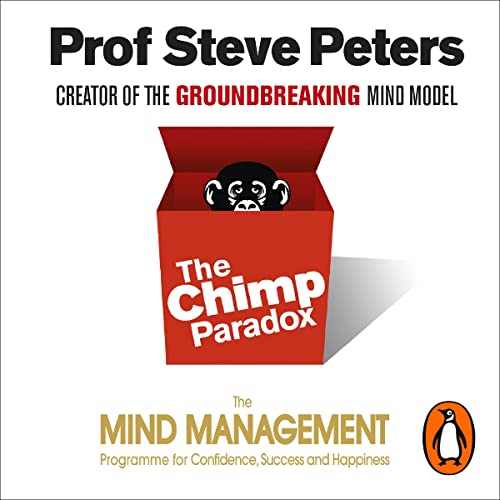Estimated reading time: 4 mins
In the realm of personal development and psychological understanding, few books have made as significant an impact as ‘The Chimp Paradox‘ by Professor Steve Peters. This groundbreaking work offers a fascinating insight into the complex machinery of the human mind, using a simple analogy that resonates deeply with readers. As we navigate through this review, we will explore the core concepts of the book, its practical applications, and why it’s a must-read for anyone seeking to understand themselves and others better.

Get ‘The Chimp Paradox’ on Amazon
Understanding the Chimp Model
At the heart of ‘The Chimp Paradox’ is the Chimp Model, which Peters uses to describe the mind’s functioning. The model divides the brain into three primary components: the Chimp, the Human, and the Computer. The Chimp is our emotional side, often illogical and impulsive, driven by feelings and basic instincts. The Human is the rational side, seeking facts, truth, and logic. Lastly, the Computer is our storage space for habits and learned behaviors, acting automatically based on previous programming.
Peters’ genius lies in how he simplifies the complex interplay of these elements. By personifying the emotional part of the brain as a Chimp, he makes it easier for readers to visualize and manage their emotional responses. The Chimp, although occasionally troublesome, is not an enemy. It is a fundamental part of us that requires understanding and management.
Managing the Inner Chimp
One of the most compelling aspects of ‘The Chimp Paradox’ is the emphasis on managing the Chimp. Peters does not advocate for suppressing or defeating it but rather for understanding and living harmoniously with it. This is a refreshing approach in a world where there’s often an overwhelming emphasis on constant positivity or control over emotions.
Peters provides practical strategies for managing the Chimp. Recognizing when the Chimp is in control, understanding its fears and motivations, and learning to soothe it are all vital skills. This approach helps in reducing stress, improving decision-making, and enhancing overall emotional well-being.
The Human and the Computer
While much of the book focuses on the Chimp, Peters also delves into the roles of the Human and the Computer. The Human, representing our logical side, is in a constant tug-of-war with the Chimp for control. Developing the ability to analyze situations objectively and respond rather than react is crucial.
The Computer, on the other hand, is our autopilot mode. It stores our beliefs, values, and programmed reactions. Peters emphasizes the importance of programming the Computer with positive behaviors and thought patterns, which can significantly influence our daily lives and decision-making processes.
Real-life Applications
‘The Chimp Paradox’ excels not only in theory but also in its practical applications. Peters includes numerous real-life scenarios, from managing anger and frustration to improving communication and relationships. These examples provide readers with tangible methods to apply the Chimp Model in everyday life.
For instance, in conflict resolution, understanding that you might be dealing with someone else’s Chimp can foster empathy and patience. Similarly, recognizing your Chimp’s fears and anxieties can lead to more compassionate self-reflection and personal growth.
Impact on Personal Development
This book is more than just a guide to understanding the mind; it’s a toolkit for personal development. Readers learn to navigate their internal landscapes with more ease, leading to improved mental health and resilience. The Chimp Model empowers individuals to take charge of their emotional responses and, in turn, their life outcomes.
In the realm of professional development, ‘The Chimp Paradox’ has profound implications. It can enhance leadership skills, team dynamics, and workplace communication. By understanding the emotional and psychological underpinnings of behavior, professionals can create more harmonious and productive work environments.
Critique and Considerations
No book is without its critiques, and ‘The Chimp Paradox’ is no exception. Some readers may find the simplification of the brain’s workings as Chimp, Human, and Computer a bit reductive. In reality, the brain’s emotional and rational processes are far more intertwined and complex. However, this simplification is also the book’s strength, making a complex subject accessible and engaging.
Another consideration is the need for ongoing practice. Understanding the Chimp Model is one thing, but applying it consistently requires effort and mindfulness. The book provides the framework, but the real work happens in the day-to-day implementation of its principles.
Conclusion
‘The Chimp Paradox’ by Steve Peters stands out as a unique and valuable contribution to the field of psychology and personal development. Its engaging analogy, practical advice, and comprehensive approach make it an essential read for anyone interested in understanding the human psyche.
Whether you are looking to improve your personal relationships, manage your emotional responses, or simply gain a deeper understanding of yourself, ‘The Chimp Paradox’ offers invaluable insights. By embracing the lessons within its pages, readers can embark on a journey of self-discovery
